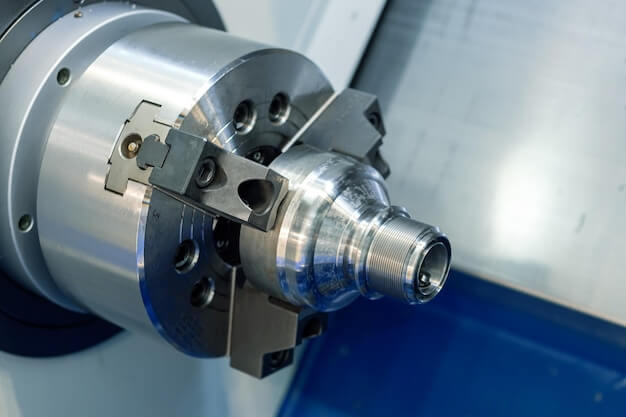Bead blasting is a prominent finishing process often applied in Computer Numerical Control (CNC) machining. This article aims to explore bead blasting, its significance, and how it’s produced within the domain of CNC machining.
Developed with advanced technology, CNC machining involves controlled movements of machinery tools like drills or lathes using programming inputs. It is used across industries like aerospace, automotive, electronic, medical, and manufacturing for precision and accuracy. Within this spectrum, bead blasting identified as a surface treatment method plays a critical role and holds immense importance.
What is Bead Blasting?
Bead blasting refers to the process where high-pressure force is employed to propel media (usually glass beads) against a particular surface. The primary purpose of bead blasting is to polish or clean that surface by removing impurities or defects, providing a uniform, smooth finish.
The Implementation in CNC Machining
In CNC machining, bead blasting is typically performed after parts have undergone milling, turning, drilling, or other machining processes – mainly if these components will be visible in their final application. While automated equipment infused with CAD software controls most CNC machining operations, bead blasting demands intense manual labor due to its complexity.
So, how is bead blasting made possible in CNC machining?
1. Preparation: Initially, the machinist prepares the part which has been milled, turned, or drilled, ensuring no remnants from previous machining steps are present.
2. Grit Selection: The choice of beads for blasting depends on the desired smoothness level. Fine grits yield smoother surfaces while coarse ones deliver a rough texture. Sometimes, the material also determines the type of beads utilized.
3. Blasting: In the actual bead-blasting phase, the pressurized air propels the chosen media towards the component surface at high speeds. The operator manually directs the machine nozzle over different regions to ensure a uniform finish.
4. Rinse and Dry: After bead blasting, the components are rinsed to remove any residual media before they’re dried and inspected for quality control.
The Advantage of Bead Blasting
Bead blasting in CNC machining promises several benefits that contribute towards better aesthetics or mechanically improved parts:
– It can effectively remove surface defects such as machine lines, burrs, scratches, and adhered substances like rust or paint.
– It gives precision-machined components a matte or satin appearance, which is often desired for aesthetic reasons or to reduce glare.
– It allows machinists to alter the final product’s look and feel without affecting its dimensional accuracy – rather enhancing it by exposing defects otherwise hard to detect.
– It promotes superior bonding if the component will be painted, coated, or undergo another treatment post-blasting.
Where Caution is Needed
Despite its advantages, bead blasting isn’t suitable for all materials. Fragile materials might not withstand the process while ductile metals could warp under intense pressure. Proper judgement must hence guide bead selection and pressure settings.
In conclusion, bead blasting remains an integral part of CNC machining, known for inducing enhanced visual appeal and greater durability. Though heavily labour involving, the results well justify the time and effort spent, making this process widely adopted within industries globally. Understanding these aspects can uplift your manufacturing practices bringing you at par with the accelerating innovation pace.
Other Articles You Might Enjoy
- Innovative CNC Machining for Advanced Aerospace Materials
Innovative CNC Machining for Advanced Aerospace Materials CNC machining, or computer numerical control machining, is a process utilized in the manufacturing sector that involves the use of computers to operate…
- Advanced Techniques in CNC Machining: Working with Inconel for High-Temperature Applications
Introduction to CNC Machining and Inconel The world of manufacturing has revolutionized significantly with the utilization of CNC (Computer Numerical Control) machining. This innovative technology enables precision-controlled automated devices to…
- Evaluating the Use of Beryllium Copper in CNC Machining for Aerospace Applications: Is It Safe and Effective?
Introduction: Beryllium Copper's Role in CNC Machining for Aerospace Applications The advanced manufacturing industry, especially aerospace where safety and effectiveness are of prime importance, heavily relies on robust materials to…









